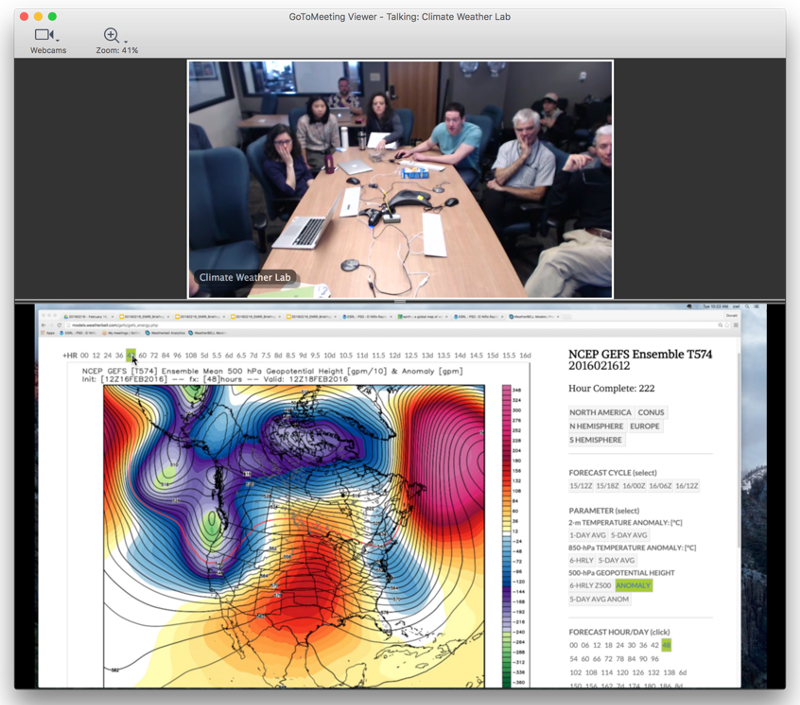Behind the scenes of the ENRR Daily Weather BriefingsFebruary 16, 2016by Don Murray (CIRES)
 Don (left) and Alex preparing equipment, webinar connections and more for a daily weather briefing. (Credit: Barb DeLuisi, NOAA)
Don (left) and Alex preparing equipment, webinar connections and more for a daily weather briefing. (Credit: Barb DeLuisi, NOAA)
Behind the scenes of the ENRR Daily Weather Briefings
February 16, 2016by Don Murray (CIRES)
BOULDER, Colorado — Before the forecasters gather each day, I’m part of a team that makes sure everything is in place for a successful, distributed daily weather briefing with our teams in Boulder, Honolulu and California. This involves starting and testing the webinar software and bringing up the web pages and briefing folders on the screen so everything will be ready to go at 9:00am MT each day, seven days a week.
Alex McColl (CIRES) and I have taken on this task to ensure smooth operations for the duration of the experiment. Before 9:00am, we fire up the GoToMeeting webinar software on the main display in the NOAA ESRL Physical Sciences Division’s Climate Weather Lab (aka The Weather War Room), dial up the conference call and start the webcam so all is ready for people to connect in remotely. During the briefing, we constantly monitor the new remote connections — including muting microphones to avoid feedback if necessary. On NOAA G-IV flight days, the Hawaii group likes to show their proposed flight tracks, so we transfer screen control to them while they explain what they want to accomplish that day. We can easily do all this from the webinar control panel — whether we are physically in the room, in our office, or even at home.
 Daily weather briefing viewed through GoTo Meeting. Alex is in the back by the door (appropriately clad in a Hawaiian shirt) making sure things are working okay.
Daily weather briefing viewed through GoTo Meeting. Alex is in the back by the door (appropriately clad in a Hawaiian shirt) making sure things are working okay.
The first part of the daily briefing is usually more of a local Boulder affair — just the forecasters who are in the room, or on weekends, connected from home (like Gil Compo, who we can usually see via webcam sipping his coffee). Around 10:30am, others join us from afar — the Global Hawk operations at Edwards AFB in California, the Hawaii field personnel, and various listeners around our building or around the country. At that point, we start recording the briefing, so those who can’t attend at the appointed time can view it later. If you’re in the room or if you connect to the meeting, you’ll see Alex or me sitting in the back, quietly monitoring the webinar (although I occasionally chime in on the forecast discussion).
After the weather briefing is over, the forecasters and operations personnel go their separate ways, but our work is not done yet. We have to make sure the webinar recording gets converted to the proper format and copied over so it can make it out to the website. I also make sure there is a new Google Docs folder available to hold the following day’s briefing materials. And on the next day…we’ll start all over again.
